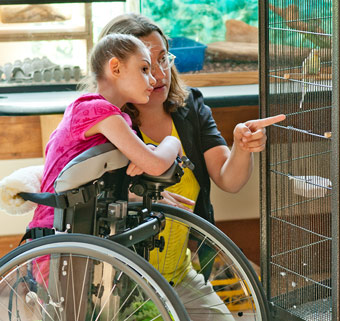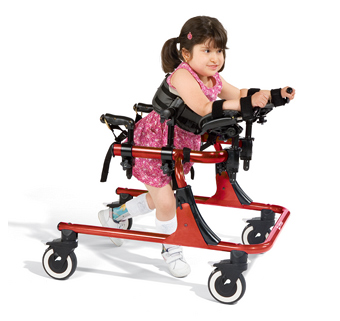Death of a Father and a Founder
Jerry Voll, 1941 – 2021
| December 2021Last month saw the death of one of Rifton’s founding fathers. Jerry Voll grew up in Louisville, Kentucky, and studied for the ministry at Lancaster Theological Seminary in Pennsylvania. His first assignment was in Lancaster where he and his new wife Nancy moved to begin his pastorate. It was while living there that they discovered the Bruderhof which, at the time, had three communities in the United States. Together they felt a call to join this community movement, and uprooted and moved with their two-year-old daughter, in 1971, to the Deer Spring community in rural Norfolk, Connecticut.
Norfolk was – and still is – a tiny town which peaked in the 1970s at just over 2,000 residents but it was home to several small institutions that provided residential care for children with disabilities. Ann Storck’s Nursery, the Laurel School, and Ann’s Nursery for Babies were all in Norfolk, and the young people of Deer Spring visited them regularly to sing, chaperone children on outings or simply play on the premises.
For Jerry, work at Deer Spring was a far cry from a pastorate, but his commitment to this new lifestyle was complete and unreserved. He worked in the Community Playthings factory, assembling wooden storage lockers, bookshelves, chairs, and other school furnishings. That is where he found himself in 1975, the year that saw passage of the landmark legislation called the Education for All Handicapped Children Act, the precursor of the Individuals with Disabilities Education Act (IDEA).
So it was perhaps inevitable that shortly after, therapists and teachers at the nearby residential homes started calling for modified chairs to accommodate the needs of their children. Simultaneously, and in response to the new legislation, Kevin Purcell, an employee of Connecticut’s Department of Developmental Services, came to Norfolk’s single elementary school to establish a program to accept newly mainstreamed children with disabilities who were arriving at their doors.
Purcell must have discovered early that the factory at Deer Spring made school furnishings, and he came knocking. In a partnership that has since defined Rifton’s approach to design, Purcell and Voll were paired in a joint effort to create better seating and positioning equipment for children with all manner of disabilities and deformities. Their first collaborative creation was the “fully adjustable” Rifton E50 Chair. When I last spoke with Jerry, he reminisced about those early prototypes, grinning wryly over the ungainly fabrications of slotted plywood and plastic knobs that characterized these devices. “Nancy and I were youth group leaders by then,” he told me, “and the young people at Deer Spring never tired of teasing me about those ‘fully adjustable’ chairs.”

An early “fully adjustable” Rifton Chair, c. 1978

Today, the Rifton Activity Chair, its ongoing design still entirely dependent on regular and extensive input from therapists all over the world
But they worked, and Jerry labored on, now aided as well by the therapy staff of Ann’s Nursery. His next efforts focused on a bath chair, and standing frames followed. He started traveling further afield, and soon found that therapists throughout the Northeast were eager to give design input. Voll was joined in his efforts by others in Community Playthings, not only at the Deer Spring factory but at Woodcrest in Rifton, New York, where at the time, we specialized in aluminum fabrication, and at New Meadow Run, in Farmington, Pennsylvania, where they did commercial sewing. So while Jerry Voll was by no means the only one designing this new type of equipment, his name always comes up first in the collective memory of Rifton when reminiscing about those early, formative years.
That’s how Rifton was born. On November 1, 1977, the Community Playthings catalog featured a four-page spread showcasing the handiwork of Voll and his colleagues. For the next three years the Rifton line was carried by the larger Community Playthings, but by 1980 the product offering had expanded enough to justify its own catalog.
I visited Jerry and his wife Nancy in early July to probe his memory of those early Rifton beginnings for a longer article I was working on at the time. Deer Spring closed in 1997, and Kevin Purcell died in 2018, so some details are lost to history, but Jerry’s memories remained vivid. Diagnosed in March 2016 with colon cancer, I found him physically tired but mentally alert and ready to reminisce. He was seated in a large recliner in the living room, his hands in thick gloves despite the summer heat, suffering from poor circulation ever since the cancer treatments. He was able to confirm many of the details I sought, and most of our conversation covered memories of the Norfolk neighborhood and the four years our paths crossed at Deer Spring while I was in middle and high school.
Jerry grew most animated when telling about the children for whom he had designed equipment, and I was reminded of the most rewarding element of Rifton’s mission. He described the moment when he placed the first child in Rifton’s newly designed Adjustable Walker (listed in that first catalog for $69.50). “It was in a school gymnasium,” he recounted. “The parents were there. I think the girl was around ten years old. We placed her in the walker, her first time upright and able to propel herself independently, and she took off across the gym floor. There was not a dry eye in the room,” he marveled, his own voice catching, eyes welling at the memory, now forty-five years old.

Jerry Voll with his wife Nancy in October 2016 in New York City, while undergoing cancer treatment
Jerry Voll was eighty years old when he passed on November 17. He leaves behind Nancy, his wife of fifty-five years, two sons and two daughters. He also leaves behind an extended family everywhere he called home at one time or another during fifty years of community living in the United States, England, and Australia.






